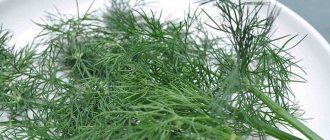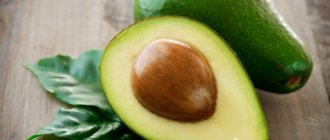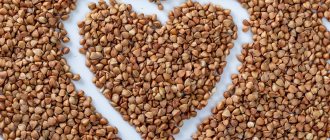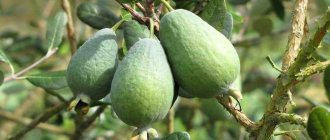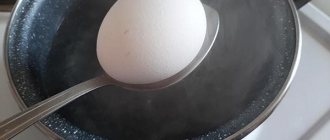Figs are the fruit of a tropical tree (fig), which has long ceased to be exotic for us. Now it is constantly present in the assortment of most grocery stores. The ripening period of the fig tree (another name) falls in the last days of summer - autumn, after which the fruits, resembling a pear in shape, become sweet and juicy. The fruit has the most vivid taste after full ripening. And in order for it to remain that way for as long as possible, you should know how to store figs at home and how to choose them correctly.
Selection and preparation of fruits
When choosing quality fig tree fruits, pay attention to their appearance, smell and texture. The surface of the fig should be smooth, the peel clean, without stains or damage. Good fruits have a perfectly round shape. If you notice a sour smell, this indicates that the fruit has begun to ferment and is not edible.
Ripe figs are moderately soft; they do not spread in your hands even when pressed. Small drops of nectar form on the peel of a high-quality fruit.
The color depends on the variety and can be:
- green;
- yellow;
- brown;
- dark purple, almost black.
A spoiled product has a very soft and slippery consistency, and traces of mold are visible at the base of the fruit petiole. The sour smell is characteristic not only of fermented fruits, but also of overripe ones. And figs ripen very quickly - in 2-3 days. Dents appear on the sides, the skin withers and shrinks.
Figs are a seasonal fruit; they are bought from June to October. The peel is edible and does not need to be peeled. The fruits are washed, cut in half and the contents are eaten with a spoon.
The fruits are prepared for storage. First, they are carefully sorted, removing all specimens with traces of mechanical damage and an unpleasant smell of mash. A high-quality product is wiped with a soft cloth to remove excess moisture, especially in the area of the stalk. The figs are then placed in a container, box or bowl in a single layer.
Drying at home and outdoors
The drying process can be carried out in several ways, which will require various kitchen appliances.
In an electric dryer
How to dry figs in a vegetable and fruit dryer:
- Cut the fruits into slices or plates; their thickness should not exceed 2-3 mm.
- Place the raw materials on the pallet in one layer.
- Set the operating temperature of the device in the range of +55 +60 °C.
- Turn on the dryer. Swap the pallets every 3-4 hours, so the raw materials will dry more evenly.
- The total drying time can take from 1 to 2 days, depending on the area of the trays, the number of figs and the power of the device.
In the oven
Whole or chopped figs, either fresh or boiled in sugar syrup, are suitable for this method.
Basic principles for using an oven to dry a fig tree:
- Set the minimum operating temperature of the device. Optimal is +60 °C.
- If the oven settings are not at this temperature, then you should set it to the lowest possible temperature (about 100°C) and turn the raw materials over every 1.5-2 hours.
- If you plan to dry sliced fruits, then the cut should be located at the top and not come into contact with the grate.
- The use of baking trays is not permitted. Air circulation and constant blowing can only be achieved by placing the figs on a grill.
- The oven door should be kept ajar at all times. Otherwise, the figs will bake in their own juices rather than dry out.
- Cooking time can vary from 8 hours to 2 days. You can determine readiness by appearance and consistency.
In the microwave
Instructions for drying fig trees in the microwave:
- Cut the fruits into thin 2-3 mm slices and place them in one layer on a wire rack.
- Turn on the “Defrost” mode and set the timer for half an hour.
- After the timer alerts, check the condition of the raw materials and, if necessary, extend the drying time for another 5-10 minutes.
Outdoors under the sun
This option is used in regions with hot climates with normal or low humidity. Excess moisture in the air prevents drying and provokes rotting and mold formation on raw materials.
How to dry figs outdoors:
- Boil the fruits in sugar syrup. In this method, boiling is a must; this way the taste of the fruit is better preserved and the likelihood of spoilage of overripe specimens is reduced.
- Prepare a large wire rack and place the boiled and dried figs on it. They should not touch each other.
- Place in the sun and cover with gauze to prevent damage to the raw material by flies and other insects.
- Turn the figs once a day. Bring the grill indoors at night or during bad weather.
- The total drying time outdoors is 2 to 3 days.
How to store it correctly
To preserve figs at home for as long as possible, ensure optimal temperature, humidity and lighting conditions.
Temperature
When storing fresh fruits indoors, the temperature is maintained within +18…+20°C. In such conditions, the figs will remain for a day. They will be stored in the refrigerator at a temperature of +1...+2°C for 10 days. Dried figs are stored at +15°C for no longer than 6 months.
Humidity
In dry air, the fruits wither, and in high humidity they rot. The optimal indicator is maintained within 60-75%.
Lighting
A bright lamp or direct sunlight are the enemies of ripe figs, so it is recommended to store them in a dark place (refrigerator, cellar, basement). This applies to both fresh and dried fruits.
Where to store
Storage of figs depends on its type:
- Fresh fruits or juice are stored in the refrigerator.
- Berries are also frozen at temperatures from -15°C.
- The dried, dried or canned product is kept in the cellar, pantry or on the balcony.
- At room temperature, figs will last no more than a day without refrigeration.
Regardless of the storage location, it is necessary to protect the fruits from bright light and direct sunlight.
Can it be stored in the refrigerator?
The best place to store figs is the refrigerator. The fruits are kept at a temperature of +1°C. Shelf life – 2-3 weeks.
Calorie content of dried figs per 100 g
Drying removes moisture from the product. The concentration of nutrients increases. At the same time, calorie content also increases. The energy value of dried figs is 257 kcal. Particularly sweet, ripe specimens can contain up to 280-290 kcal. The BJU ratio is 3.1/0.8/58, respectively.
Dried figs contain fewer calories due to the increased amount of moisture. Energy value from 170 to 210 kcal. There is only one drawback - short shelf life. Insufficiently dried berries will mold faster. The benefits and harms of dried figs for the body are similar.
The dried product contains a lot of sugar and has a high glycemic index. A healthy treat will become harmful if you are obese or overweight.
Storage methods
There are several basic ways to store fig tree fruits.
Dried
Such figs retain most of their beneficial properties. Dry the fruits in the sun or in an electric dryer.
For processing in the fresh air, carry out the following steps:
- The fruits are washed, dried and placed on a wire rack. Cut in half when drying, place the cut side up.
- The grille is installed so that it is blown by the wind from all sides.
- The figs are wrapped in two loose layers of gauze to protect them from insects and dust.
- Drying lasts 4-6 days.
- Then the fruits are collected on a string and placed in the shade for another day.
An electric dryer makes fig slices juicy and golden brown:
- The fruits are divided into 2 parts and dried in the sun for 8-10 hours.
- Then they are laid out on the device pallet in 1 row.
- Small fruits are dried for 10 hours, large ones require more time, check their readiness.
Dried figs are stored for no longer than six months at a temperature of +15°C.
Quick freezing
To treat yourself to figs at the end of the season, they are frozen. To do this, the fruits are washed, dried, placed in an airtight container or bag and placed in the freezer at a temperature of -15°C.
Important! It is not recommended to wash figs under running water, as this will damage the skin. It is advisable to place the fruits in a large colander or sieve, dip them into a basin several times, and then let the water drain.
Drying
This product contains more moisture than dried product, so it needs special storage conditions. For 3 months, dried figs are kept in a closed glass jar on a cool balcony or in a pantry.
If you put the dried product in canvas bags with drawstrings, the storage period will last up to 6 months. You can wrap the fruits in paper and place them on the bottom shelf of the refrigerator. In this form they will remain for at least 8 months.
Pickling
To marinate the product you will need (for 1 cup of fruit):
- 1 tbsp. port wine;
- 1/4 tbsp. balsamic vinegar;
- 1 tsp. lemon zest;
- 1 tsp. orange zest;
- 1 tsp. Sahara;
- 1/2 tbsp. chopped walnuts.
- salt, pepper - to taste.
Preparation:
- Place the figs in a glass jar, pour in the port wine and add the zest.
- Close the container and put it in the refrigerator for a day.
- After 24 hours, the liquid is drained and the remaining ingredients are added.
- Bring the mixture to a boil, reduce heat and simmer for 30 minutes.
- Cool the figs, transfer them to a jar and put them in the refrigerator.
The pickled product is stored for 3 to 5 months.
Compote
For a 3-liter container, take 300 g of fresh or dried figs and 150 g of sugar. Pour 2.5 liters of water into a saucepan, add figs and sugar and cook for 10 minutes. Remove the pan from the stove, pour into a jar and close with a lid. Store in the refrigerator.
Jam
You will need 0.7 kg of fig fruits and 0.5 kg of sugar. The ingredients are mixed in a basin or pan and left for 3 hours. After the juice is released, place the container on the stove and cook for 5 minutes. The syrup is drained, after which the procedure is repeated again. The jam is poured into jars and closed. You can add citric acid or vanilla to taste.
The jam is stored in the cellar, pantry or refrigerator.
Juice
The juice is useful for diseases of the cardiovascular system, thrombosis, and anemia. Fresh fruits are washed, doused with boiling water and rubbed through a sieve. The puree is mixed with boiled water in a 2:1 ratio. The mixture is squeezed through cheesecloth, and the resulting juice is poured into a jar or bottle. This drink is stored in the refrigerator for 2-3 days.
Recipes for dishes with dried fig trees
- Tagine with lamb
. Take 1 kg of lamb, wash, dry, cut into large pieces. Cut 2 large onions into half rings and place in a large saucepan with the meat. Add 2 tablespoons of olive oil, 1 teaspoon of turmeric, 1 dessert spoon of salt and a mixture of peppers to taste, mix thoroughly. Pour water over the lamb until it barely covers the meat, and simmer over low heat for 1 hour. Add 300 g of dry figs and 2 tablespoons of honey, simmer until the liquid has evaporated. Toast chopped walnuts over moderate heat. Add to them a couple of cloves of garlic passed through a press and 100 ml of tomato juice, steam over the fire, season the meat with this sauce, mix well. Let it sit for another minute, turn it off, and let it brew for 20 minutes. Serve with chopped parsley or cilantro. - Vegetarian pilaf
. Take 600 g long parboiled rice. Rinse and drain in a colander. Pour 50 ml of vegetable oil into a cast iron pot with a thick bottom, add 1 large onion, cut into half rings, and 1 large carrot, cut into cubes. Fry until half cooked over high heat, stirring constantly. Pour rice into the cast iron pot, pour boiling water over it so that the water is 1 cm above the level of the cereal. Add 1 teaspoon of turmeric, a pinch of salt and ground pepper, 100 g of finely chopped dried figs. Simmer for 40 minutes over low heat. - Salad with bacon and cheese
. Place 2 large strips of bacon on a hot frying pan, render off the fat, fry until crispy, place on a paper towel, and let cool. Place 100 g of lettuce mixture, cut into small pieces, on a plate. Cut 1 red onion into thin half rings. On top, place 50 g of finely chopped pieces of dried figs, steamed in a water bath, a handful of pine nuts, and strips of bacon. In a bowl, mix 1 tablespoon olive oil, 1 teaspoon balsamic vinegar, a pinch of salt, pepper and oregano, and 1 teaspoon mustard seeds. Drizzle the dressing over the salad and top with grated goat cheese. - Figs with mascarpone
. Take 300 g of dried fruit, rinse, cut off the stalks. Mix 1 glass of dry red wine, 100 g of sugar and 20 ml of balsamic vinegar, cook over low heat until the sugar is completely dissolved. Send the figs there, let them boil for 5-7 minutes. Place the contents in a baking dish, sprinkle with crushed nuts (walnuts, hazelnuts, almonds), place in the oven preheated to 180°C for 30 minutes. When the figs have softened, place a ball of creamy mascarpone on each rosette and bake for another 3-5 minutes. Serve chilled. - Cookies with nuts and dried fruits
. Grind 200 g of almonds or cashews into flour. Add a pinch of salt, cinnamon, 2 tablespoons of maple syrup or honey, knead the dough. Roll out the cake into a thin sheet - 1-2 mm. Grind the figs in a blender to a paste. If it is very dry, you can add a spoonful of warm boiled water. Using molds, form cookies, place a spoonful of fig paste on it, and cover with another cookie on top. Bake in an oven preheated to 180°C for 10-15 minutes.
Helpful tips to help keep figs fresh longer
There are several secrets to extend the shelf life of fruit:
- Immediately after arriving home, sort through the purchased or harvested figs, discarding damaged or fermented fruits.
- Wash them not under a running tap, but in a container of water. This will keep the skin intact.
- Do not expose fig trees to light or direct sunlight.
- Do not lay them out in several layers.
How to keep figs fresh during transportation
For transportation, they prefer to take green fruits that have not yet become sweet and soft. They are laid out in a box in a single layer and covered with burlap to protect from dust, insects and light. Leave a distance of 0.5-1 cm between the fruits so that the sides do not wrinkle and the juice does not leak out.
This is interesting:
How much and how often to water figs in summer: instructions for beginners
Simple ways to propagate figs from cuttings at home
Step-by-step instructions on how to properly cover figs for the winter and prepare the tree for cold weather
